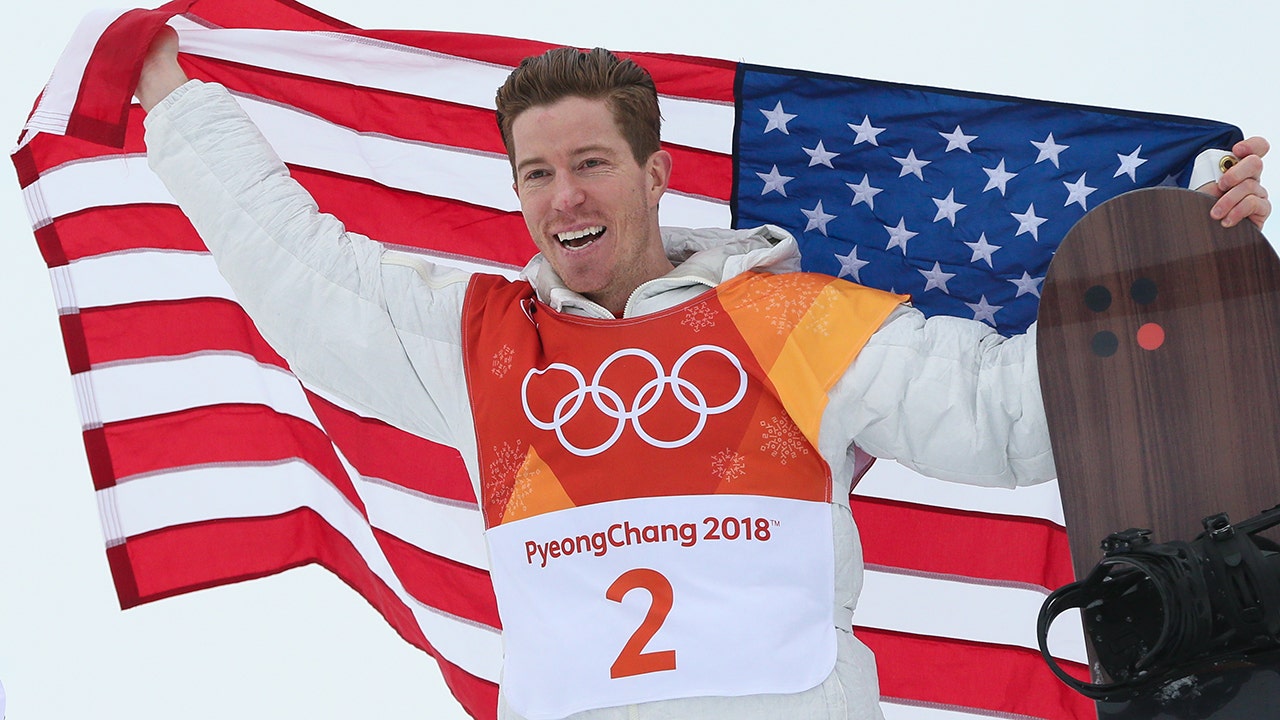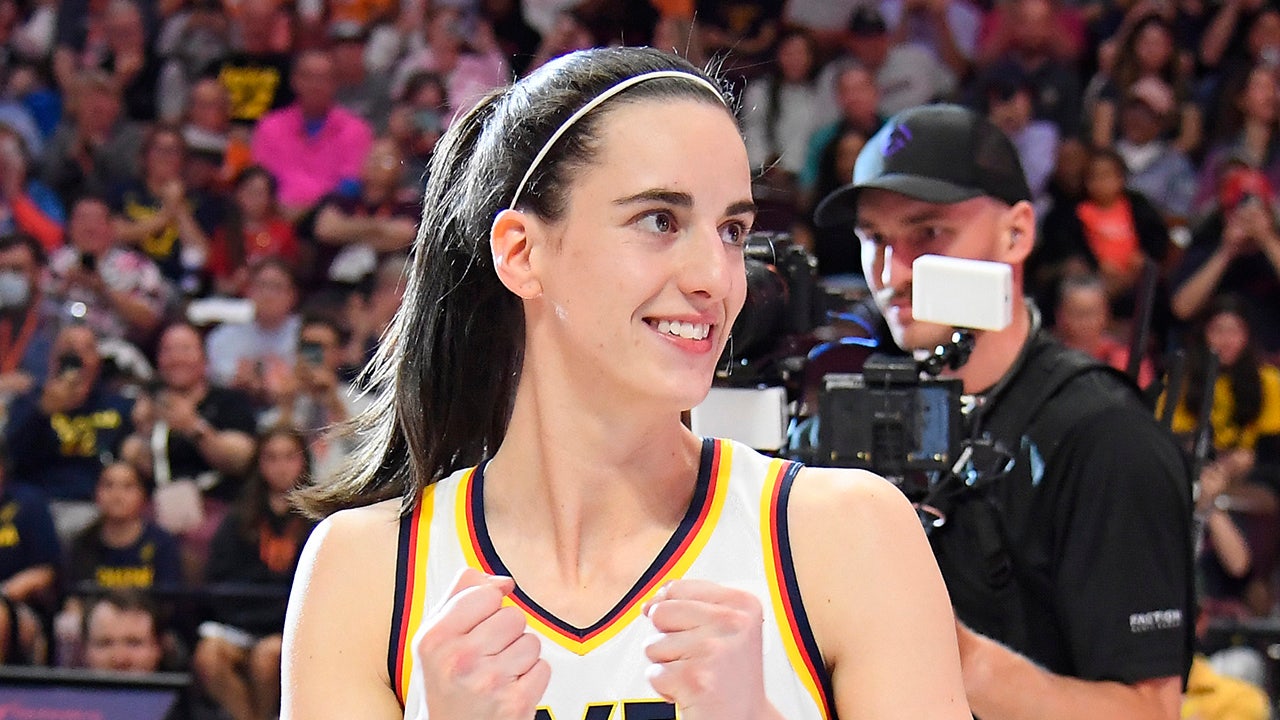When curators at the National Museum of American History began planning an exhibition gallery called “Entertainment Nation” — a destination that would fill 7,200 square feet of space with items from its vast holdings of musical instruments, movie costumes and sports memorabilia — they quickly agreed on what they didn’t want. “Our goal was not to become a Hall of Fame gallery,” says John Troutman, who served as the lead curator, “or to even serve as a gallery that provides a history of entertainment.”
Instead, the idea was to juxtapose items from the collection that tell the story of America and its ideals through popular culture: how patriotism was depicted through 1950s television Westerns and country singers in the early 2000s; how music born in Cuba or the Bronx entered the mainstream; the broadening of representation on theater stages and TV screens.
ABOVE LEFT: Puerto Rican astrologer Walter Mercado, also known as Shanti Ananda. (Dennis M. Rivera Pichardo/AP) ABOVE RIGHT: Joe Louis beats Jersey Joe Walcott in the 11th round at Yankee Stadium in 1948. (Allsport/Getty Images) BOTTOM LEFT: Orson Welles delivers a radio broadcast from a New York studio in 1938. (AP) BOTTOM RIGHT: Ali Wong performs in the “Baby Cobra” Netflix special. (Alex Crick/Netflix)
The result is an exhibit that rewards exploration: Where else will you find Mr. Rogers’s sweater, Michael Jordan’s basketball jersey, a floor-length Diana Ross dress from the 1960s and Grandmaster Flash’s turntables?
“These are objects that create really intimate relationships with individuals in terms of their own memories, in terms of the power of nostalgia and their associations with particular stories,” Troutman says, “and so we wanted to create an exhibition that acknowledged the power of those objects.”
LEFT: Michael Jordan’s jersey. (Jaclyn Nash/National Museum of American History) RIGHT: Michael Jordan helps lead the Chicago Bulls to victory against the Washington Bullets in 1996. (Brian Bahr/Getty Images)
The diversity of the collection also makes it appealing: Sure, visitors pose for selfies with the droids from “Return of the Jedi” and Prince’s curvaceous guitar, but they also line up for pictures in front of Nipsey Hussle’s gold chains and the costume Lucy Lawless wore on “Xena: Warrior Princess.”
To get a better understanding of the new exhibit and the treasures within, we spoke to the museum’s curators and its director about some familiar objects, as well as artifacts that might be overlooked by visitors.
(Jaclyn Nash/National Museum of American History)
(Jaclyn Nash/National Museum of American History)
This collection of artifacts is a snapshot of “Entertainment Nation”; curators say objects will regularly move on and off display. “We’re driven by the assessments of our conservators,” says curator Ryan Lintelman, and the museum is focused on preserving artifacts for the long haul. “Fabric or textiles or paper might be changed every six months or a year, whereas things made of wood or metal might be able to stay out longer.”
The “Entertainment Nation” exhibit at the National Museum of American History.
Lin-Manuel Miranda’s costume from “Hamilton” is waiting in the wings to make its debut; Lintelman is looking forward to putting items from the Indiana Jones franchise on display. (The museum has Indy’s hat, jacket and whip in its collection.)
Like the American pop culture it explores, the exhibit is always evolving.
These interviews have been edited for length and clarity.
Objects in the “Entertainment Nation” exhibit will regularly move on and off display, curators say.
The Muppets
“We have a really long relationship with the Henson family — we were the first museum to ever put Muppets on display back in the ’80s. Jim worked with us. Some of the puppets, especially the ones we have from ‘Sesame Street,’ are originals that were made for the show, and he gave them to us. We’ve had this collection for a long time, and then a huge donation of the most historic puppets came in the 2010s, when Jane Henson and the family decided that they were going to give us some of those, especially the ones from ‘Sam and Friends,’ the first show Jim Henson did for the local NBC affiliate in Washington, D.C. The original Kermit that we have on display right now came in with that.
“But with the Muppets in general, we try to keep one on display at all times. There are so many stories you can tell with the Muppets: These simple puppets became such quintessential American characters, and they’re these sort of oddballs that all follow their dreams, but they support each other, and they accept each other.” — Ryan Lintelman
‘Handmaid’s Tale’ costume
“One of the things about this truly amazing costume is that, of course, it resonates for many in my generation. I was in college when Margaret Atwood’s novel came out in 1985. But our consumption of literature also translated to the [2017 Hulu] series, and it quickly became part of popular culture as we continue to wrestle with the rights of women, especially over reproductive rights. We have a lot in our collection, and even though you think of them as costumes, they’re really the visualization of ideas, and ideals, and of characters. And the outfit’s also so striking as a physical object.
“Some of the most interesting moments around the ‘Handmaid’s Tale’ costume are seeing multiple generations of women who maybe, like me, read it in college, or their daughters, or granddaughters who watch the show on Hulu. So seeing them around the object is exactly what we want museum experiences to do: to connect people who might know each other, some of whom might not, around a very powerful object.” — Anthea M. Hartig
Prince’s guitar
“This object came to the museum in 1993. At the time, Prince had reached out to the museum to suggest making a donation.
“This guitar arrived with essentially no documentation about how he used it or where he used it, or which guitar this was. I think for a while it was a little bit unclear to the museum staff exactly which guitar he had donated — was it a newer guitar, was it an older guitar? But what the staff did identify at the very beginning was a small fleck of paint — the yellow paint that had been chipped off the back of the guitar — and they could see some paint underneath the yellow sheen that covers the entirety of the instrument.
“The guitar shape is so recognizable for many of us today because it first featured in his breakout film ‘Purple Rain,’ which made him an international superstar. The guitar in that film was white — it’s a guitar that’s behind the glass at the guitar shop, a guitar that he longs for and dreams about, and eventually the guitar that he begins to perform with by the end of the film.
“Fast-forward a little bit to just maybe a few months after he had passed away. John Woodland, who was a luthier for Paisley Park studios, reached out to me because he had a theory about this guitar, and he asked if he could come visit the museum to take a closer look at the instrument. I reached out to the National Museum of Natural History and inquired as to whether or not they might have availability for us to use their CT scanner, which they used principally to study fossils. It was incredibly useful to take a look at it because the CT scanner reveals the construction underneath the paint, and illuminated where the guitar had been broken and repaired in the past.
“We found, I think, six layers of paint underneath the outer layer. There’s a white at the base. We think that this is actually the first cloud guitar that Prince had ever had made. It was his first custom guitar ever. And it’s the guitar in ‘Purple Rain.’
“Prince had always sought to break binaries in terms of the genres he was performing, in terms of how he was presenting himself, in terms of songs that were really steeped in notions and conversations involving gender and race. He was really here to challenge us all, to reimagine how we see ourselves in the world, and to feel good about that.” — John Troutman
Selena’s costume
“This costume featured in one of her last live performances, and it’s used in a statue that’s commemorating Selena in Corpus Christi (Tex.). And so, it’s really powerful. It says a lot about her influence in Tejano music. I think a lot of people, when they think of Tex-Mex music or Tejano music, they might not be thinking about a leather studded jacket, right? She’s often termed this crossover, which connected generations and multiple identities: You’ve got American, Mexican, Mexican American and all these variations of that. And she’s known for being able to bridge these divisions through her music and her style.
“She is known for designing her own clothes and having a really good stage presence. Part of that is the costumes she wears — it’s combining a modern style with Tejano music, which is a Texas-Mexico borderland genre of music. I think she wanted to shift away from what most people think about it — cowboy hats or whatever — and create her own idea of what a bicultural person was. Nothing says that more than playing Tejano music or these love ballads with a costume like a studded leather jacket.” — Steve Velasquez
‘Xena: Warrior Princess’ costume
“Today, as you see the growth of fan culture and the breaking down of stereotypes of who can be a fan of science fiction and fantasy, we look back at ‘Xena’ and say, ‘Oh, wow, that was an incredibly popular program that attracted lots of young viewers who were inspired by seeing a strong woman taking care of problems and getting into action, but still not trying to be like a man.’ And also, there was a subtext of the show where she had a friendship with Gabrielle, where a lot of viewers now say that they had assumed it was a lesbian relationship, and that was very important to them to see on their television. It made them connect to the characters.
“I think the whole [display] case [which also includes costumes and props from female actors on “Star Trek: Discovery” and “The Walking Dead”] is a little bit of fighting toxic fan bases who get upset when women are presented in strong roles. I wanted to show that there has been a long history of women being present in this kind of programming. These are all different types of characters, but you can see that there is a history there, and that it is important and it is impactful.” — Eric Jentsch
R2-D2 and C-3PO from ‘Return of the Jedi’
“They have been out on display before, but I think that they’ve never been presented as magnificently as they are right now. In this new world, especially in the entertainment world, we can’t compete in terms of like slam-bang kinds of things — you know, Imax and sound systems and amusement parks. What draws people to museums, I think, is really these objects and getting to see the real thing, so we wanted to give people the opportunity to experience them as closely and as obsessively as possible, being able to see every angle. It’s something that was very much in mind as we were designing this exhibit.
“R2-D2 and C-3PO are these characters that carry through the entire [Star Wars] franchise. And, you know, they’re sort of the everyman characters. They have no special talents and abilities. They’re just the ones that are getting shuttled around from starcruiser to starcruiser and battle to battle. You see yourself in them trying to understand this huge world of Star Wars and all the themes that run through that — the idea of rebels fighting against authority. I think everyday people are much closer to R2-D2 than they are to a Jedi.” — Ryan Lintelman
Joe Louis’s boxing gloves
“Joe Louis is, of course, an important athlete in terms of being heavyweight champion. But these gloves come from a 1936 bout against a German fighter, Max Schmeling. People talk about keeping politics out of sports, but that was pretty impossible this time, having an African American fighter representing America.
The Black community was super energized about it, but [Louis] also drew the attention and excitement of the [entire] American population, because they wanted to differentiate themselves from the Nazis. So I think he played a really important part by becoming one of the first truly national African American heroes.
He lost the first fight, but then he famously won two years later, in 1938. He would go on to serve sort of as a representative for the American military in World War II.” — Eric Jentsch
Ruby slippers
“The human scale of the ruby slippers helps to bring Judy Garland to life in front of you. You think about this teenager who is in the biggest movie in the world, the tragic story of her life, and how difficult it was to handle the fame and responsibilities that were foisted upon her. But I think part of the power of the slippers is that so many people see themselves in her story, not to mention Dorothy’s story. There are a lot of different meanings that have been applied to the slippers over the years, from the idea that she’s one of the few female adventure movie stars of the 1930s, to the fact that gay men identified as ‘Friends of Dorothy’ in the 1970s and ’80s. There are so many different ways to see yourself in that story.
“They’re another one of the first objects that came [into the museum’s entertainment collection] in 1979. I think that it really helps us as curators who deal with entertainment to talk about their power, and why this is the only movie from the 1930s probably that 8-year-olds are still watching every year. But the resonance of the themes that are in it, and the importance that it has had in terms of shaping the way that we talk — it’s added so much to the cultural vernacular, in terms of phrases like, ‘We’re not in Kansas anymore,’ or ‘Pay no attention to the man behind the curtain.’ It’s a real testament to the power of movies to shape American culture.” — Ryan Lintelman
Nipsey Hussle’s chains
“Having Nipsey represented in the show is important. This is something that, of course, all museum folks have to grapple with: How contemporary can we be in order to tell these historical stories that we want to tell? Nipsey’s obviously a very contemporary figure, and a figure who not only was sadly cut down in his prime, but really spoke to a community ethic and still has people who look to him as a role model. He’s become an icon very quickly. He’s a person who people feel a certain connection with, having not only enjoyed his music but enjoyed his message. That makes the tactile [opportunity to touch a model of the chains] even more important. It’s almost like a pilgrimage moment.” — Krystal Klingenberg
Ibtihaj Muhammad’s fencing mask/head covering
“I’m a sports curator, and any time the Olympics are happening, I tune in to see, ‘Hey, what might I collect that’s interesting or tells a great story?’ And in 2016, when Ibtihaj Muhammad was the first American to compete in the Olympics wearing hijab, it was pretty monumental — a touchstone moment. So after the Olympics were over, I just reached out on the internet. A lot of times, that’s the way we get ahold of people when we don’t have contact info. And she did respond, and said yes. I didn’t tell her what to donate. I just said, “What would best represent your time at the Olympics?’ She sent in the mask and the head covering, and also the fencing jacket and gloves. She picked those specifically to tell her story. I think the mask, especially with the American flag, you’re just like, ‘Oh, my gosh, that’s awesome.’
“In that [display case], they were going for patriotism: What does patriotism look like? That’s why they have the Captain America shield — I think we were just trying to find objects that would relate patriotism to the visitor, and a [fencing] mask with the American flag is pretty much patriotism right in your face. I think it just ties into her role as an athlete, as a Muslim American and as a woman. Freedom takes on all kinds of different aspects, and I think all those things that she represents are really shown in that mask.” — Jane Rogers
Walter Mercado’s cape and crystal ball
“If you talk to anyone who’s Gen X or older, and they’re from Latin America or they’re Latino, they’ll remember Walter playing in the background. I remember Walter being in the background of our household, you know, around dinnertime. His presence was a calming, soothing voice for the Latino community. And so the first impression as a little kid is, ‘Wow, this is an interesting choice of costumes and interesting choice of props.’
“He had this flair that was not totally telenovela, and not totally newscaster. He came from a theater background, so he knew how to be engaging in that way. He had this flamboyant manner, and he just dialed it up a few notches for television. His iconic look was these bedazzled outfits. He had hundreds of them. Colors were very important to Walter; red was very important for him.
“He was very encouraging when he talked to people when he had call-ins, or when he was trying to talk broadly about what’s going on in the universe. He wanted people to really have another viewpoint, and light a bright light in people’s lives. So for me, it was very important to include him.” — Steve Velasquez
Fab 5 Freddy’s boombox
“When you have a boombox and you’re cranking up your tune, everybody can hear it. So there’s a way in which you’re claiming your space, claiming your dominion and sharing the tunes that you enjoy with other people. It really makes me long for a time when we used to listen together more; now, we tend to be listening separately unless you’re at a live musical event. But with this kind of boombox, you are forced to listen together. The fact that this is Fab Five Freddy’s makes it even more compelling. He hosted ‘Yo! MTV Raps,’ which really breaks rap into the mainstream. Having hip-hop in the [‘Entertainment Nation’] show is absolutely critical, because the main thrust of the exhibit writ large is the ways in which entertainment has pushed the national conversation forward, and hip-hop has certainly done that from the very beginning.
“One thing that we really strove for is a real appeal to multigenerational groups, and I think such an object is not going to be legible to younger people necessarily in the same way. It’s definitely going to elicit stories about how we used to listen — having a dual tape deck, and how you would tape music off the radio and make the original mixtape and what that meant. Not to mention, of course, eventually we get to burning CDs, and that seems to boggle young people’s minds.” — Krystal Klingenberg
Captain America’s shield
“We wanted to represent the Marvel Cinematic Universe, which has been so hugely important in recent years, but also this character, who has such a long history himself. [Captain America began] as this representation of patriotism and American values in World War II. We’ve got the comics where, on the cover, he’s punching Hitler, but there’s also the complex evolution of the character over time. He’s representing what’s happened with these superhero movies in recent years, where he’s reanimated and awakened in this world of moral ambiguity, and he’s dealing with these big issues of liberty versus security, the war on terrorism, issues that it seems like the government can’t handle. We’re looking for heroes to kind of break out of the traditional mold and find ways to save us all.” — Ryan Lintelman
Althea Gibson’s Wimbledon dress
“Althea Gibson was a groundbreaker in two sports: not just tennis, but also golf. And I think that it’s very interesting that, at least in terms of my growing up, she wasn’t a household name despite these accomplishments. What we really wanted to do in the exhibit is cement her place in history.
“This is the dress that she wore in becoming the first African American to play at and to win Wimbledon. I would say that there’s a more personal nature to clothing than, say, her racket or cups [from Wimbledon, which are also in the museum’s collection]. That is more like an achievement: With a trophy, you might just say, ‘This person won.’ But I think people connect to the uniforms and clothing in the exhibit because it really helps personify them.” — Eric Jentsch
Angel’s ‘Rent’ costume jacket
“I think Broadway finds new ways to reinvent itself for every generation. ‘Rent’ was a musical that had this new kind of pace and tenor to it that spoke directly to the issues that were affecting cities and young people and artists at that time. That jacket is such a cool object, representing the cultural scene of that moment and all these other issues that were represented in that show, from AIDS to LGBTQ representation to city life in the early 1990s.
“I think in the original Broadway production, [the coat] didn’t last very long — it’s hard to find photos of it, even, because it was replaced with something a little more durable. It’s made of a collage of cut-out newspaper and magazine photographs that are taped together, with, like, transparent shelf liner. It’s one that our conservators are keeping an eye on. The adhesive is going to fail at some point, and it’s one that we want to share with the world while we still can.” — Ryan Lintelman
Ali Wong’s ‘Baby Cobra’ dress
“Some of the best objects tell several stories, and Ali Wong’s outfit does exactly that. She’s an Asian American woman comedian, and in that sense, there’s one way to think about an object as offering a fresh and a new perspective on what we think we know about a particular topic. The history of stand-up has been told a lot of different ways, but the idea of seeing an Asian American woman — a stand-up comedian who’s also seven months pregnant — is still relatively new for a lot of audiences. She fits squarely within a tradition, and also helps to break the mold.
“Even though your mother may not know about Ali Wong, parents and aunties and uncles might know Phyllis Diller as a comedian who was also a fantastic joke writer, a pioneering woman comedian, and who also appeared onstage pregnant. So there is kind of a through line that can be achieved when thinking about Ali Wong.” — Theo Gonzalves
Buck Leonard’s travel bag
“The travel bag was donated to us by Mr. Leonard, along with some other artifacts from his career. I think it says a lot about his experiences off the field. You think of Negro League baseball players having to travel a lot, and how that must’ve been during the time of segregation. It also shows how hard it was to make a living in baseball for someone like him at the time. He also played in the Mexican League; he went all over trying to make a career. I would say it’s even interesting that he played for the Homestead Grays, because they had actually had two hometowns: They played here in Washington, but also in Pittsburgh. So he did a lot of traveling at a time when it wasn’t easy for a Black athlete to travel — and it was very different to how athletes travel today.” — Eric Jentsch
Orson Welles’s typewriter
“One of the things we tried to do in the exhibit was to show that all of these conversations we have about entertainment have always been the case throughout American history. For example, the idea of there being no gatekeepers with new forms of media — the same thing that we talk about today, with social media and TikTok, and the way that people have these opportunities to create, but also opportunities to spread disinformation. And ‘War of the Worlds’ is the original example of fake news, in that people were running out in the streets thinking that there’s an alien invasion because, in a sense, people weren’t conditioned to think that something that happened on the radio might not be true when it’s presented as a news broadcast.
“We had [originally planned to display] some records that represented the release of the sound recording of the ‘War of the Worlds’ broadcast. But as we were building the exhibit, we got in touch with Steve Soboroff, who is a typewriter collector in LA, and he offered to donate some, including this one. We don’t know for sure that Orson Welles wrote the script for ‘War of the Worlds’ on it, but it is the one that he was using at that time, so we think so. It just gives us a great window into his working process, and that moment where he was the hottest creator in the world.” — Ryan Lintelman
‘All in the Family’ chairs
“There’s this idea that Archie Bunker represented a certain part of the population, maybe the silent majority of the Nixon years. It was created by Norman Lear to be a negative character — you’re supposed to look at him as a bigot and not admire him. And yet a large percentage of the population did kind of look up to Archie, and see him as somebody giving voice to the people who had been forgotten and left behind in this rapidly changing society.
“[The chairs] were one of the first things we collected, actually, in 1978. I think it’s so interesting to see that the curators at that time understood the power of entertainment in the same way that we’re talking about today, to get people to talk about those weighty issues that they were talking about on that show in the Bunkers’ living room. You’re sitting in your living room, seeing yourselves in these intergenerational conversations and political conversations between people at very different ends of the spectrum.
“They have been on display almost continuously since 1978. They’re not only fan favorites, but also favorites of the curatorial team for introducing people to the kinds of things we try to do with our collection.” — Ryan Lintelman















































